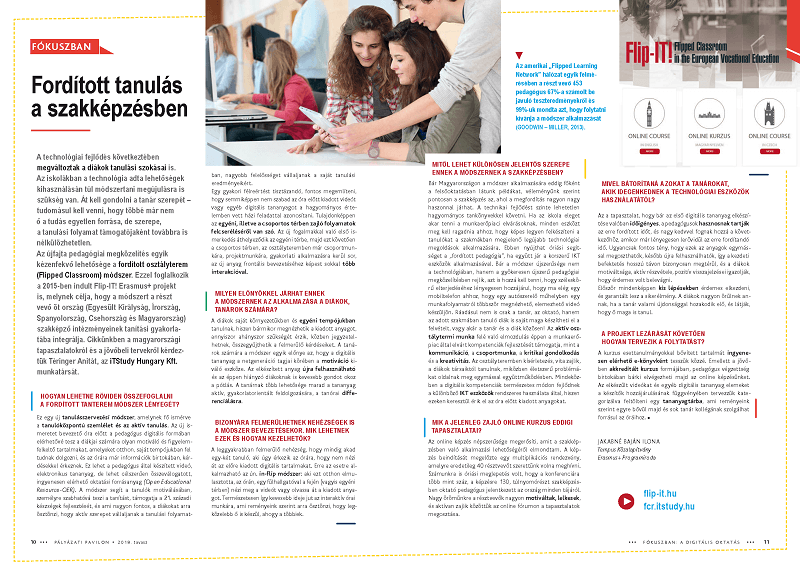
Flipped learning in vocational education and training — interview with our colleague in Pályázati Pavilon
An interview with our colleague Anita Téringer was published in Pályázati Pavilon, the journal of Tempus Public Foundation, about the flipped classroom teaching method and the related Flip-IT! Erasmus+ project.
"Technological advances have also changed the way students learn. In addition to exploiting the opportunities offered by technology, schools need to innovate in terms of methodology. The role of the teacher needs to be rethought - recognising that he or she is no longer the sole source of knowledge, but that his or her role as a facilitator of learning is still indispensable.
Flipped Classroom is one of the obvious options for a new pedagogical approach. This is the focus of the Flip-IT! Erasmus+ project, which aims to integrate the method into the teaching practice of vocational education and training institutions in five participating countries (UK, Ireland, Spain, Czech Republic and Hungary). In our article, we asked Anita Téringer, from iTStudy Hungary Kft., about the experiences in Hungary and future plans.
– How can you briefly summarise the essence of the flipped classroom method?
– It is a new way of organising learning, with a learner-centred approach and active learning as its main features. Before the lesson introducing new knowledge, the teacher makes motivating and attention-grabbing content available in digital format for students to work through at home, at their own pace, and they arrive at the lesson already informed and with questions. This can be a video or electronic learning material produced by the teacher, or a specially selected set of free Open Educational Resource (OER) materials.
It helps motivate learners, personalises teaching, supports the development of 21st century skills and, importantly, encourages students to take an active role in the learning process and to take greater responsibility for their own learning outcomes. The shift towards active classroom work supports the development of competences that the labour market demands, such as communication, teamwork, critical thinking and creativity.
To clarify a common misunderstanding, it is important to mention that under no circumstances should a video or other digital learning material distributed before class be identified with homework in the traditional sense. In fact, it is a matter of interchanging the processes that take place in the individual and the group space. The first introduction to the new concepts is transferred to the individual space, and then to the group space, the classroom, where group work, project work and practical application take place, with much more interaction than the frontal introduction of new material."
